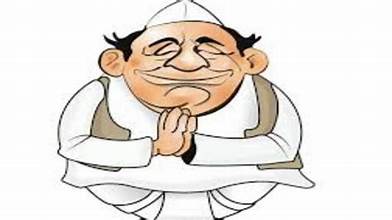Exploring the Latest Developments in the General Election and Its Impact on India
The 2024 General Election in India has been a focal point of national attention, drawing eyes from all corners of the country. With Prime Minister Modi’s Bharatiya Janata Party (BJP), Rahul Gandhi’s Indian National Congress (INC), and various regional players vying for power, the political landscape has been dynamic and intense. In this article, we delve into the live updates, analysis, and projections surrounding this significant event that shapes the future trajectory of India’s governance.
The Electoral Landscape: Key Players and Their Strategies
As the battle for political supremacy unfolds, Prime Minister Narendra Modi and his BJP are employing a multifaceted strategy to maintain their dominance. With a blend of traditional campaigning and leveraging digital platforms, the BJP aims to resonate with diverse voter segments across the nation. Meanwhile, Rahul Gandhi and the INC are striving to revitalize their political presence through grassroots mobilization and strategic alliances with regional parties.
Dynamic Shifts in Voter Sentiment: Impact on Electoral Dynamics
The evolving socio-political landscape has witnessed notable shifts in voter sentiment, challenging conventional electoral equations. Issues such as economic growth, social justice, and governance have emerged as pivotal factors influencing voter choices. Moreover, regional dynamics play a crucial role, with parties like the Aam Aadmi Party (AAP) in Delhi and other regional entities asserting their influence in localized contexts.
Analyzing Campaign Strategies: From Rallies to Social Media
Campaigning in the digital age entails a blend of traditional rallies and sophisticated social media outreach. Prime Minister Modi’s charismatic persona and oratory skills continue to draw massive crowds at rallies, energizing BJP supporters. Simultaneously, the party’s robust social media machinery disseminates targeted messaging, amplifying its reach and engagement.
On the other hand, Rahul Gandhi and the INC are recalibrating their approach, emphasizing grassroots connect programs and door-to-door campaigns to connect with voters at the grassroots level. Additionally, INC’s social media endeavors aim to enhance visibility and narrative framing, countering BJP’s narrative effectively.
Regional Dynamics: Decoding State-Level Contestations
While national narratives dominate headlines, state-level dynamics often determine the final electoral outcomes. States like Uttar Pradesh, Bihar, and West Bengal emerge as battlegrounds with unique socio-political complexities. Regional parties, such as the Trinamool Congress in West Bengal and the Samajwadi Party in Uttar Pradesh, wield significant influence, shaping the electoral calculus in their respective domains.
Emerging Trends and Projections: Towards a New Political Paradigm
As the General Election progresses, emerging trends offer glimpses into the evolving political paradigm in India. While the BJP retains its formidable position on the national stage, the resurgence of regional parties poses a challenge to its absolute dominance. Furthermore, the emergence of youth-centric issues and the role of urban voters signal a nuanced shift in electoral dynamics, highlighting the need for adaptive political strategies.
Disclaimer : इस न्यूज़ पोर्टल को बेहतर बनाने में सहायता करें और किसी खबर या अंश मे कोई गलती हो या सूचना / तथ्य में कोई कमी हो अथवा कोई कॉपीराइट आपत्ति हो तो वह [email protected] पर सूचित करें। साथ ही साथ पूरी जानकारी तथ्य के साथ दें। जिससे आलेख को सही किया जा सके या हटाया जा सके ।














